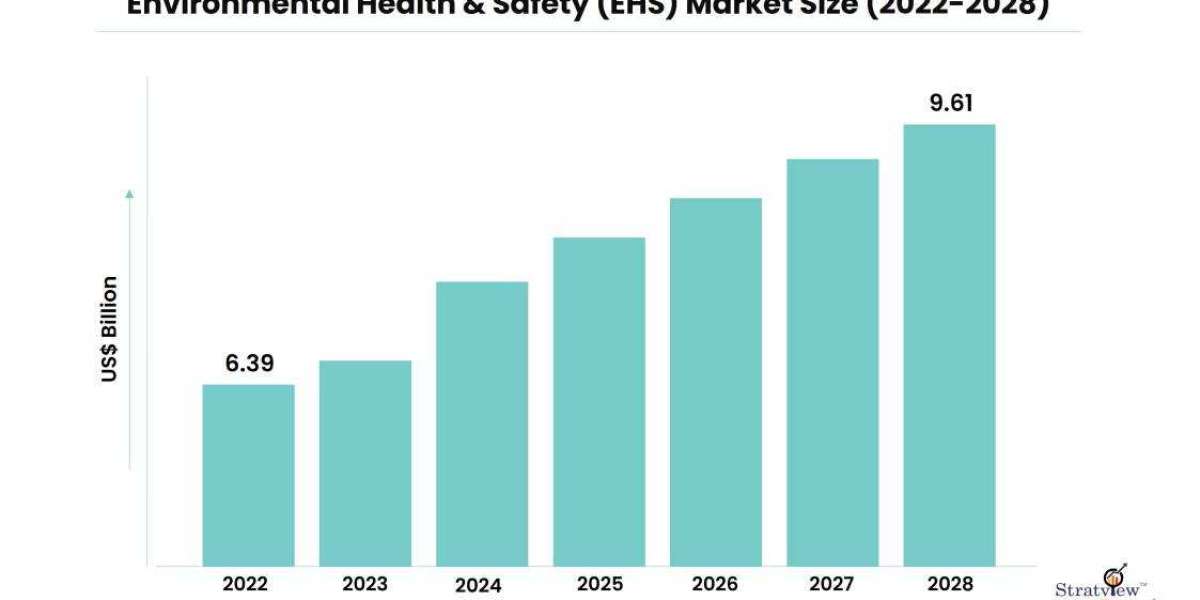In the age of sustainability, there has been a significant shift in global consciousness towards protecting the environment and ensuring the well-being of communities. With this shift comes the growing importance of Environmental Health and Safety (EHS) practices across industries. EHS encompasses a wide range of initiatives and regulations aimed at minimizing environmental impact and safeguarding human health in the workplace. In this article, we will explore why EHS has become increasingly vital and how it contributes to a sustainable future. The environmental health safety (EHS) market is estimated to grow from USD 6.39 billion in 2022 to USD 9.61 billion by 2028 at a CAGR of 7.0% during the forecast period.
One of the key reasons for the rising significance of EHS is the growing awareness of environmental issues. Climate change, pollution, and resource depletion have become pressing concerns, with their impacts felt worldwide. Organizations and individuals alike are recognizing the need to reduce their ecological footprint and adopt sustainable practices. EHS provides a framework for achieving these goals by promoting the responsible management of resources, waste reduction, and the use of clean technologies.
Moreover, EHS plays a crucial role in safeguarding human health and well-being. Many industrial processes and activities can pose risks to workers and surrounding communities if not properly managed. By implementing robust EHS programs, organizations can identify and mitigate potential hazards, thereby protecting the health of their employees and the public. From reducing exposure to harmful chemicals to ensuring ergonomic work conditions, EHS practices prioritize the safety and well-being of individuals.
The legal landscape also contributes to the growing importance of EHS. Governments around the world are enacting stricter environmental regulations and workplace safety standards. Non-compliance with these regulations can lead to severe penalties and reputational damage for businesses. Consequently, organizations are recognizing the need to prioritize EHS to ensure compliance with the law and maintain their social license to operate. By proactively integrating EHS into their operations, companies can mitigate legal and financial risks while demonstrating their commitment to sustainable practices.
Furthermore, consumers and stakeholders are increasingly demanding transparency and accountability from businesses. They are actively seeking products and services from companies that prioritize environmental responsibility and worker safety. Organizations that fail to meet these expectations risk losing customers and facing reputational harm. EHS serves as a mechanism for companies to build trust and credibility by adopting sustainable practices, ensuring product safety, and engaging in responsible supply chain management.
EHS also contributes to business resilience and continuity. Natural disasters, such as hurricanes and floods, are becoming more frequent and severe due to climate change. Organizations that integrate EHS considerations into their operations are better equipped to withstand and recover from such events. By identifying vulnerabilities, developing emergency response plans, and implementing business continuity strategies, companies can minimize disruption and protect their long-term viability.
In addition, EHS practices foster innovation and efficiency within organizations. By encouraging the adoption of sustainable technologies and practices, EHS can drive operational improvements and cost savings. For instance, energy-efficient processes not only reduce environmental impact but also lower utility expenses. Waste reduction and recycling initiatives can lead to significant resource savings. By incorporating EHS considerations into their decision-making, businesses can enhance their bottom line while contributing to a more sustainable future.
In conclusion, the growing importance of Environmental Health and Safety (EHS) in the age of sustainability is driven by various factors. The increasing awareness of environmental issues, the need to protect human health, evolving legal frameworks, consumer expectations, and the quest for business resilience all contribute to the prominence of EHS practices. By prioritizing EHS, organizations can proactively address environmental and safety risks, comply with regulations, gain consumer trust, and drive operational efficiencies. As the world moves towards a more sustainable future, EHS will continue to play a vital role in creating a healthier and safer planet for current and future generations.














